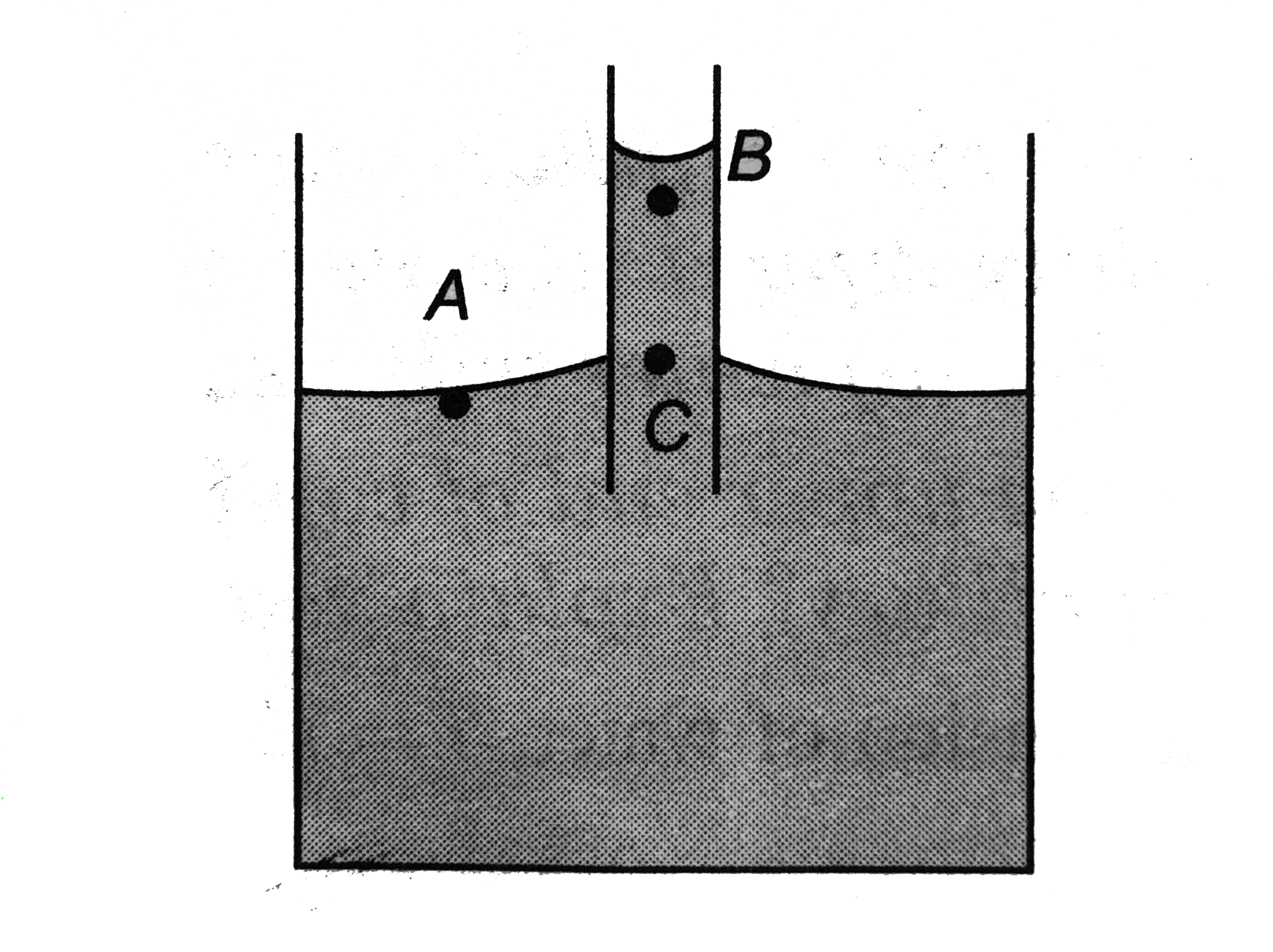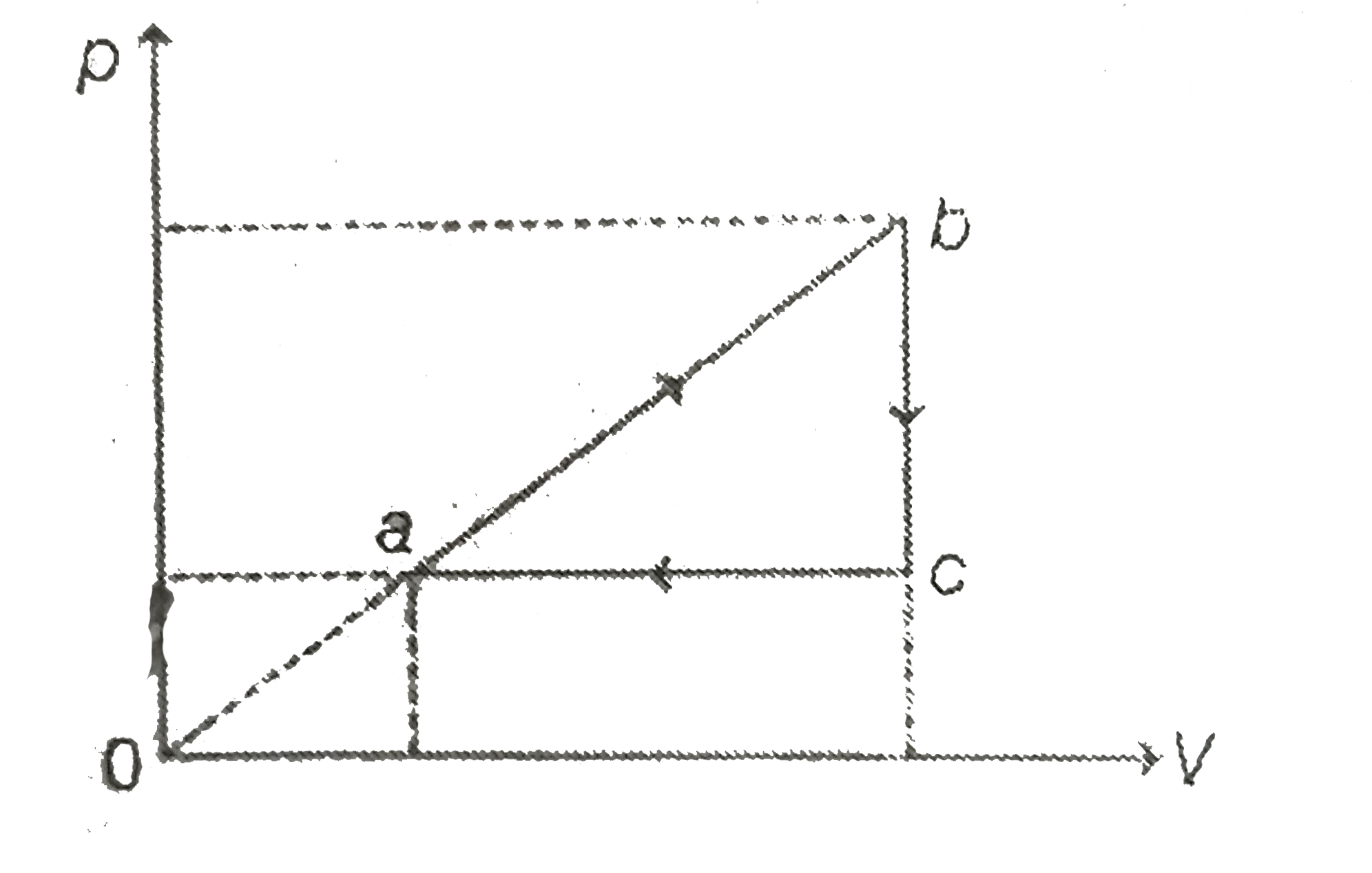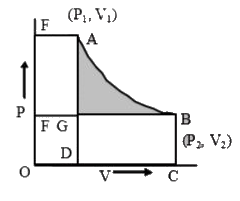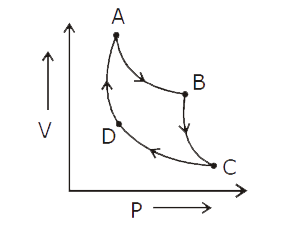The value of Cp−Cv is 1.09R for a gas sample in state A and is 1.00R in state B. Let AA,TB denote the temperature and pA and PB denote the pressure of the states A and B respectively. Then
pA<pB and TA>TB
pA>pB and TA>TB
pA=pB and TA<TB
pA>pB and TA<TB
The correct Answer is:D
For an ideal gas
CP−CV=R,ifCP−CV=1.09R
or pA>pBTA<TB
Then gas will be real. Thus pressure is high and temperature is low of real gas.
Topper's Solved these Questions
- KTG & THERMODYNAMICSBook:RESONANCEChapter:KTG & THERMODYNAMICSExercise:PART -III
Explore 25 Videos
- KTG & THERMODYNAMICSBook:RESONANCEChapter:KTG & THERMODYNAMICSExercise:PART -IV
Explore 10 Videos
- KTG & THERMODYNAMICSBook:RESONANCEChapter:KTG & THERMODYNAMICSExercise:Exercise-2
Explore 1 Video
- KINETIC THEORY OF GASES AND THERMODYNAMICSBook:RESONANCEChapter:KINETIC THEORY OF GASES AND THERMODYNAMICSExercise:Exercise
Explore 64 Videos
- MAGNETIC FIELD AND FORCESBook:RESONANCEChapter:MAGNETIC FIELD AND FORCESExercise:Exercise
Explore 65 Videos
Similar Questions
Knowledge Check
The value of (Cp−Cv) is 1.00R for a gas sample in state A and is 1.08 R in state B. Let (pA,pB)denote the pressures and (TAandTB) denote the temperatures of the states A and B respectively . Most likely
ApA<pB and TA>TBBpA>pBandTA<TBCpA=pBandTA<TBDpA>pBandTA=TBThe value of CP−Cv=1.00R for a gas in state A and CP−Cv=1.06R in another state. If PA and PB denote the pressure and TA and TB denote the temperature in the two states, then
APA=PB,TA>TBBPA<PB,TA=TBCPA<PB,TA>TBDPA=PB,TA<TBCvandCp denote the molar specific heat capacities of a gas at constant volume and constant pressure, respectively. Then
ACp+Cv is larger for a diatomic ideal gas than for a monoatomic ideal gas.BCp−Cv is larger for a diatomic ideal gas ghtan for a monoatomic ideal gas.CCp.Cv is larger for a diatomic ideal gas than for monoatomic ideal gas.DCp/Cv0 is larger for a diatomic ideal gas than for a monoatomic ideal gas.
Two different ideal diatomic gases A and B are initially in the same state. A and B are then expanded to same final volume through adiabatic and isothermal process respectively. If PA,PB and TA,TB represents the final pressure and temperature of A and B respectively then.
View SolutionA capillary tube is dipped in a liquid. Let pressure at point A,B and C be pApB and pC respectively, then

View SolutionFigure illustrates a cycle conducted with n moles of an ideal gas. In the states a and b the gas temperatures are Ta and Tb respectively. Temperature of the gas in the state C is ltbr)

View SolutionIf the pth,qthandrth terms of an A.P. be a, b, c respectively, then
a(q−r)+b(r−p)+c(p−q)=
View SolutionAn ideal gas is transformed from state A(P1,V1) to the state B(P2,V2) through path AB. In this process the work done by the gas is

View Solution


